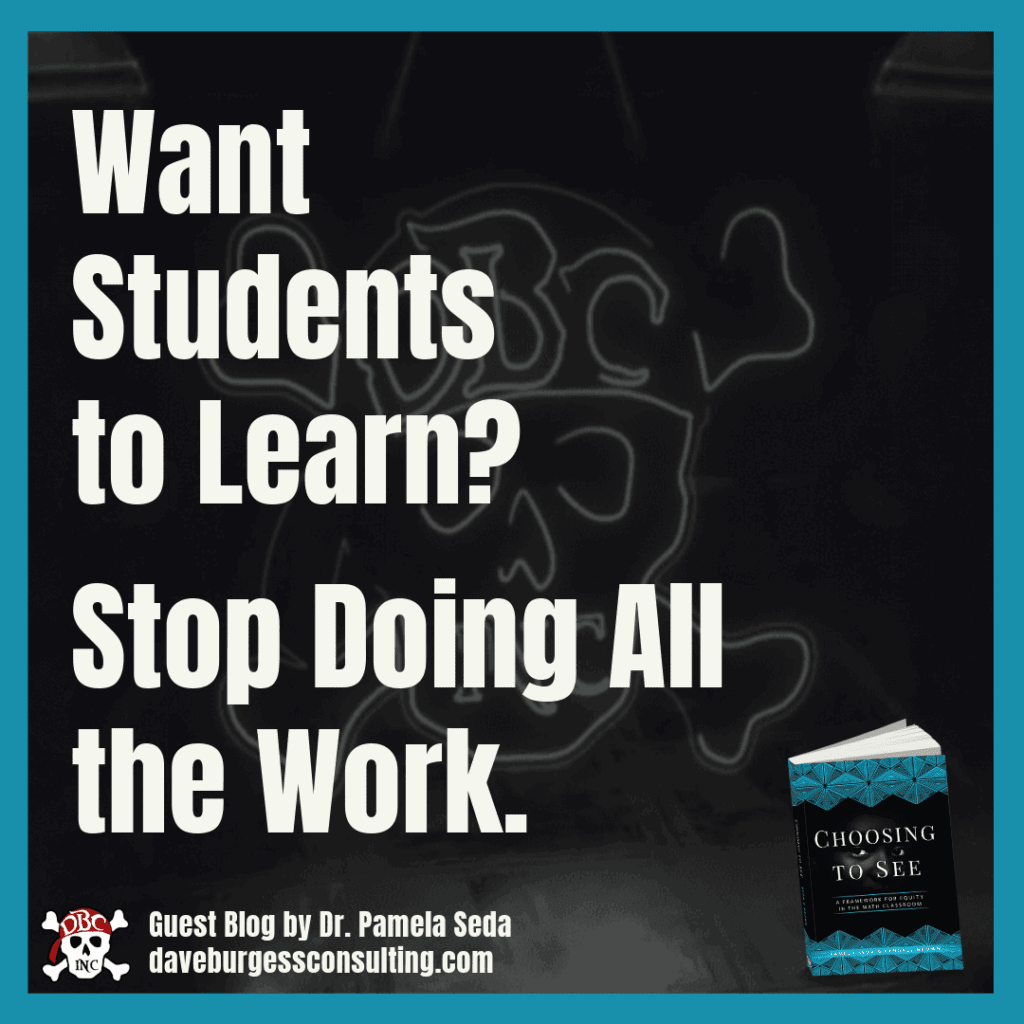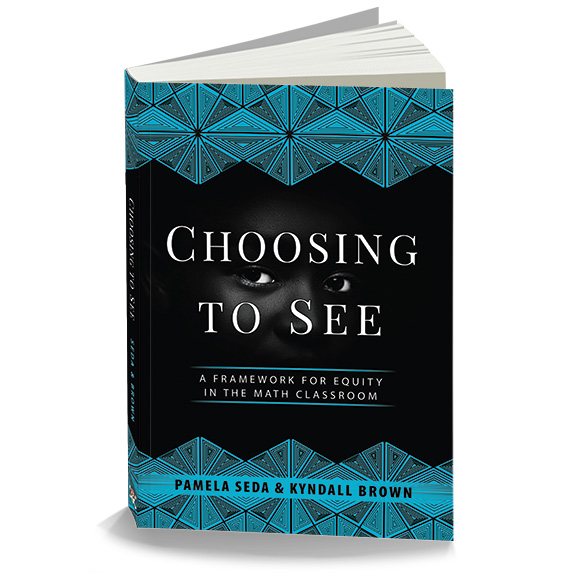Today's guest blog is by an educational consultant, speaker, and author of Choosing to See: A Framework for Equity in the Math Classroom- Dr. Pam Seda. She helps leaders support teachers in meeting the needs of marginalized math learners, so students are empowered to do hard work of learning. With over 30 years of experience as a high school math teacher, instructional coach, and district leader, Dr. Seda helps educators create rigorous, engaging, and culturally relevant math experiences—especially for marginalized students. She is the creator of the ICUCARE® Equity Framework and a passionate advocate for equity in mathematics.
You're in for a treat!
Take it away, Pam!
Guest Blog
I used to think I was killing it as a math teacher. I could break down complex problems into crystal-clear steps. My chalkboard (yes, actual chalk—I've been doing this for a while) was a masterpiece.
My students? Heads down, pens moving. It was quiet. Focused. Controlled.
But then I asked myself a question I couldn't shake: If I'm doing all the thinking, what are my students doing?
It was a wake-up call I couldn't ignore.
Because here's the truth: when we carry all the cognitive weight, we don't just overwork ourselves—we unintentionally rob students of the most essential part of learning… thinking for themselves.
The Myth of "Good Teaching"
Somewhere along the line, we were taught that good teaching means explaining everything perfectly. That a quiet classroom equals engagement. That's if kids are copying what we write, they must be learning.
But let's be honest—note-taking is not sense-making.
Real learning is messy. It involves struggle. It demands that students wrestle with ideas, make mistakes, and try again. If we're always jumping in to "save" them, we're sending an unspoken message:
I don't believe you can do this on your own.
And that's a message we can't afford to send—especially to the students who've already been told in a hundred ways that they're not "math people."
The Research (and the Reality)
The research backs this up:
Students learn more when they're actively constructing understanding—not passively watching us do the work. (Hiebert & Grouws, 2007)
But here's the challenge: when test scores loom large, teachers often over-scaffold—especially for struggling students. We simplify. We over-explain. We walk step-by-step. And in trying to help, we actually hurt.
We rob them of the very thing they need most: The chance to struggle productively.
What's Really at Stake
When we consistently do the thinking for students, we:
- Undermine their confidence and math identity
- Reinforce learned helplessness
- Deny access to rigorous problem-solving
- Send the message that deep thinking is only for the "smart" kids
And let's be clear: that is an equity issue.
The Standards for Mathematical Practice weren't written for a gifted pull-out group. They're for every student. When we reserve real math for a select few, we reinforce the myth that brilliance is rare—and we exclude the very students we should be empowering.
So What Do We Do Instead?
Letting go doesn't mean walking away. It means designing learning experiences where students are the doers of mathematics.
Here's what that looks like:
- Pose a rich task—and let students wrestle before jumping in
- Use routines like "Notice & Wonder," "Would You Rather," or "Which One Doesn't Belong?"
- Celebrate multiple strategies, not just the "fastest" or most familiar
- Let mistakes breathe—don't rush to fix them
- Facilitate conversations where students build on each other's thinking
In short: Ask more, tell less.
Try These Simple Shifts Tomorrow
Start small. Pick one move. Here are a few prompts to help you:
- "Am I doing work that my students could be doing themselves?"
- Replace "Let me show you…" with "What does this remind you of?"
- Try: "What do you notice?" or "Can someone build on that idea?"
We don't need perfection. We just need a pivot.
A Final Word: The Courage to Let Go
Let's name it: this is hard.
In classrooms where outcomes are high-stakes and control feels like safety, it takes courage to step back. But if we want students to grow as thinkers—not just test-takers—we have to trust them enough to let them struggle, reason, and rise.
They don't need us to be the hero. They need us to believe they already have what it takes.
Let's stop doing all the work. Let's start creating classrooms where students learn to think, persist, and shine.
Your Turn
What's one way you're planning to shift the cognitive load this week? Drop it in the comments, or share this with a fellow educator who's ready to make the leap.
Because when students do the work of learning, they don't just get better at math—they start seeing themselves as math people.
Thank you, Pam! That's incredible!
If you'd like to learn more from Dr. Seda, grab a copy of her book Choosing to See: A Framework for Equity in the Math Classroom right HERE! And follow her website right HERE www.sedaeducationalconsulting.com. Be sure to follow her on X and IG, too. You're sure to be inspired by her amazing work!


